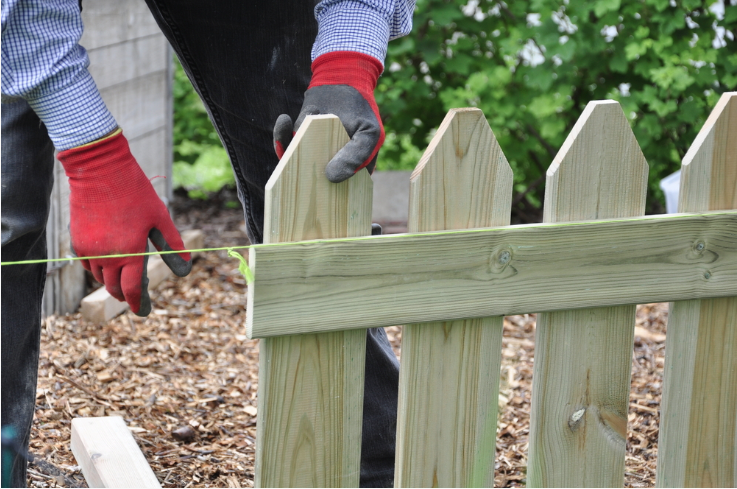How to Build a Fence on the Property Line
How to build a fence on the property line, it’s essential to consider the importance of clear communication and collaboration with your neighbors. Ensuring that both parties are on the same page from the get-go can prevent potential disputes down the line.
By maintaining open dialogue and establishing mutual agreements, you set a solid foundation for a successful fence-building project that benefits everyone involved.
Establishing Property Line Boundaries
When determining property line boundaries for building a fence, start by obtaining a copy of the property survey. The property survey will provide you with precise measurements and markers that indicate the exact boundaries of your property.
Look for any existing fences, markers, or monuments that may already be in place to help define the property lines. Using a measuring tape, measure from these markers to establish straight lines that represent the boundaries. Pay close attention to any discrepancies or unclear areas that may require further investigation.
If needed, consult with a land surveyor to ensure accuracy in determining the property lines. Additionally, check for any local regulations or restrictions that may impact where you can place your fence in relation to the property lines.
Communicating With Neighbors
To ensure a harmonious process, initiating communication with your neighbors regarding the fence construction plans is crucial. Start by informing them about the type of fence you intend to build, its height, and the timeline for the construction. Be clear about the property line boundaries discussed earlier to avoid any misunderstandings. If your neighbors have any concerns or objections, listen attentively and try to address them respectfully. It’s also wise to discuss how the cost of the fence will be divided if it’s a shared structure. Providing your neighbors with a visual representation of the proposed fence layout can help them visualize the project better.
Moreover, discussing maintenance responsibilities and access to both sides of the fence can prevent future disputes. Clearly outline any shared responsibilities, such as repairs or painting, to ensure everyone is on the same page. Lastly, consider drafting a written agreement outlining all discussed points to avoid potential conflicts in the future. Effective communication with your neighbors can set a positive tone for the fence construction process.
Obtaining Permits and Approvals
Securing the necessary permits and approvals for the fence construction is a critical step in ensuring compliance with local regulations. Before starting any work, contact your local municipal office to inquire about the specific requirements for building a fence on your property line. Most areas have regulations regarding fence height, material restrictions, and setback distances from the property line or road. You may need to submit a detailed plan of the fence, including dimensions and materials, for approval.
In some cases, you might also need to obtain approval from your homeowners’ association if applicable. The permit application process may involve fees and inspections to ensure the fence meets safety standards. It’s essential to follow all guidelines and obtain the necessary permissions to avoid potential fines or having to remove the fence if it doesn’t comply with regulations.
Keep in mind that failure to obtain the proper permits and approvals can result in legal consequences or delays in your construction project. Following the correct procedures will help you build your fence smoothly and without issues.
Selecting the Right Materials
Before proceeding with the construction of your fence on the property line, the choice of materials is a crucial decision that will impact the fence’s durability and aesthetics. When selecting materials, consider the fence’s purpose, local weather conditions, and maintenance requirements.
For a classic look, wood is a popular choice, offering a natural appearance that can be stained or painted to complement your property. Cedar and redwood are durable options, resistant to rot and insects. If you prefer low maintenance, vinyl fencing is a practical choice as it doesn’t require painting and is easy to clean.
For a modern and sleek design, aluminum fencing is lightweight yet sturdy, offering a range of styles and colors. If security is a top priority, steel or wrought iron fences provide strength and durability. Chain-link fencing is another option for security with a more industrial look.
Ultimately, choose materials that align with your aesthetic preferences, budget, and long-term maintenance capabilities.
Executing the Construction Process
When embarking on the construction process of your fence along the property line, ensure that you have obtained the necessary permits from your local municipality to avoid any delays or complications. Start by marking the exact property line to ensure your fence is built in the right location. Begin by setting the corner posts first, ensuring they’re securely anchored into the ground at the correct height. Use a level to ensure the posts are straight and plumb before securing them in place with concrete.
Next, install the line posts between the corner posts, spacing them evenly according to the type of fence you’re building. Attach rails horizontally between the posts, ensuring they’re level and securely fastened. Finally, attach the chosen fencing material to the rails, making sure it’s taut and properly aligned. Finish by adding any gates or finishing touches to complete the construction process.
Remember to regularly check for alignment and adjust as necessary to ensure a professional-looking and structurally sound fence along your property line.
Conclusion
Once you have established the property line boundaries, communicated with your neighbors, obtained the necessary permits and approvals, and selected the right materials, you can start executing the construction process. Remember to follow local building codes and regulations to ensure a sturdy and legal fence.
With careful planning and attention to detail, you can successfully build a fence on the property line. This will allow you to create a boundary that enhances both the aesthetics and security of your property.

